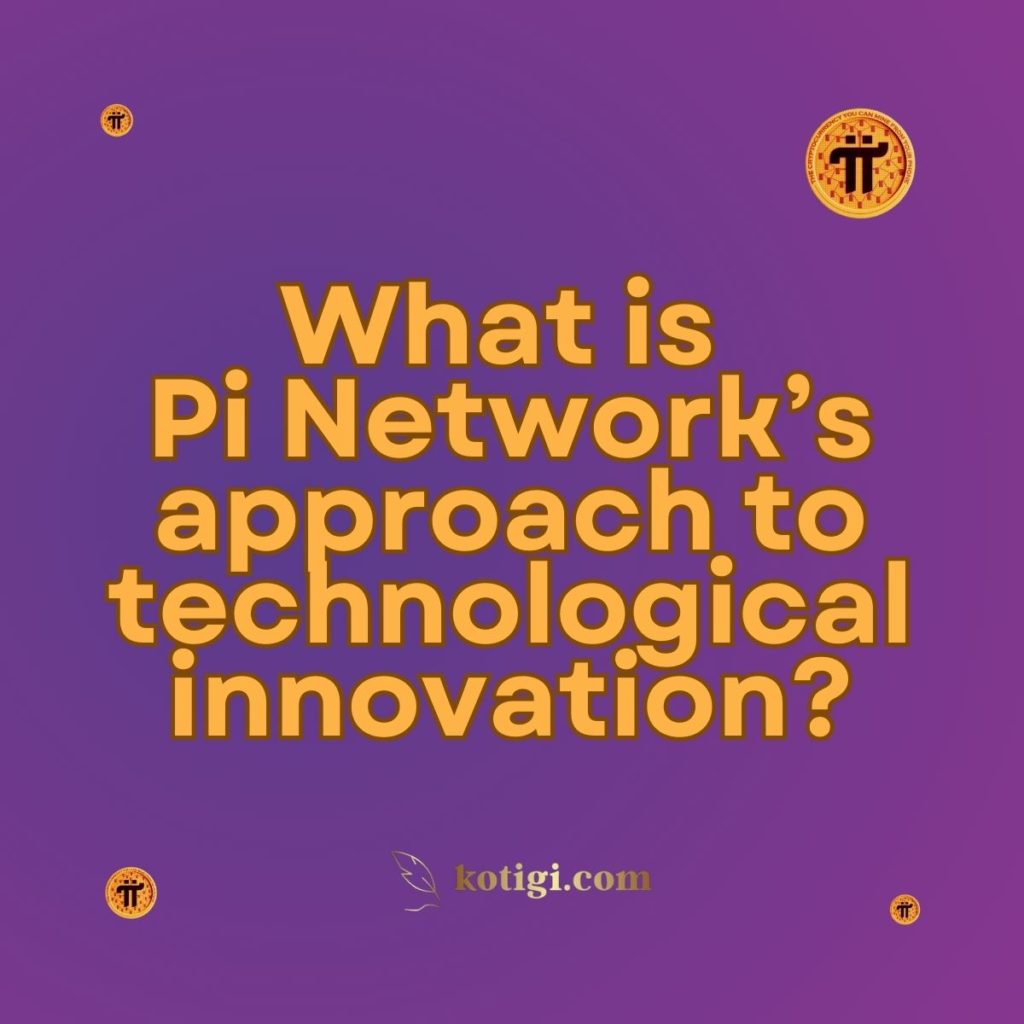
What is Pi Network’s approach to technological innovation?
Pi Network is revolutionizing cryptocurrency with its mobile-first mining approach, allowing users to mine directly from their smartphones without the need for expensive hardware or significant energy consumption. By utilizing the Stellar Consensus Protocol (SCP) for security and scalability, Pi Network aims to create a decentralized ecosystem with real-world utility through decentralized applications (dApps).
Introduction
Pi Network is an emerging cryptocurrency project that offers a unique approach to mining, using mobile devices and lightweight consensus mechanisms to provide greater accessibility and reduce environmental impact. It aims to build a decentralized digital ecosystem with applications and real-world value for users.
In this article, we will explore how Pi Network’s technological innovations, including its mobile-first design, the Stellar Consensus Protocol (SCP), and its long-term vision for decentralized applications (dApps), set it apart from other cryptocurrencies. We’ll also examine the challenges Pi Network faces and its path to mainstream adoption.
1. Mobile-First Mining Innovation
1.1 Mobile-Based Mining Accessibility
Pi Network’s standout feature is its mobile-first mining model, which allows users to mine cryptocurrency via their smartphones. Traditional cryptocurrency mining requires powerful, energy-intensive hardware, but Pi eliminates these barriers by leveraging the Stellar Consensus Protocol (SCP), enabling users to mine Pi tokens with minimal resources. This innovation democratizes cryptocurrency by making it accessible to a wider, more diverse audience.
1.2 Energy Efficiency
Pi Network’s mining mechanism is designed to be energy-efficient, addressing one of the most significant challenges faced by traditional cryptocurrencies like Bitcoin. Pi’s SCP eliminates the need for computational power, making the mining process more environmentally sustainable while still ensuring the security and integrity of the network.
2. Global Accessibility Through Mobile
2.1 Smartphone-Driven Financial Inclusion
By enabling users to mine Pi tokens on mobile devices, Pi Network taps into the widespread use of smartphones globally, particularly in emerging markets. Many individuals in developing countries lack access to traditional financial services or the necessary hardware to participate in other blockchain networks. Pi’s mobile-first approach provides a solution, allowing users from any background to mine and participate in the network.
2.2 Integrated Mobile Wallet
Pi Network also features a mobile wallet, which will allow users to store and manage their Pi tokens securely. As Pi moves toward its mainnet phase, the wallet will also support peer-to-peer transactions, enhancing its utility in everyday exchanges and encouraging users to interact within the Pi ecosystem.
3. Security and Consensus Mechanism
3.1 Stellar Consensus Protocol (SCP)
The Stellar Consensus Protocol (SCP) is at the core of Pi Network’s security and efficiency. Unlike Proof of Work or Proof of Stake, SCP relies on a network of trusted users, called quorum slices, to validate transactions. This method not only makes Pi’s mining energy-efficient but also scalable, allowing it to grow without requiring massive computational power.
3.2 Trust Circles for Decentralized Security
Pi Network implements trust circles, where users can verify transactions based on personal relationships, further strengthening the network’s security. As more users build their trust circles, the network becomes increasingly decentralized, improving both its security and resilience against attacks.
4. Building a Decentralized Ecosystem
4.1 Decentralized Applications (dApps)
Pi Network envisions a future where developers can create decentralized applications (dApps) within its ecosystem. These dApps will leverage the Pi token to enable transactions and interactions between users. As Pi Network evolves, it aims to establish a wide range of applications—from commerce to digital services—fostering a vibrant decentralized economy.
4.2 Pi Token’s Real-World Utility
To achieve long-term success, Pi tokens must hold real-world value. Pi Network plans to integrate its tokens into everyday use cases, such as online and offline transactions, payments for services, and interactions within its dApp ecosystem. This real-world utility will differentiate Pi Network from speculative cryptocurrencies that lack practical applications.
5. Scalability and Future Potential
5.1 Scalability Through SCP
Pi Network’s use of the Stellar Consensus Protocol offers inherent scalability. As the network expands, SCP enables it to handle a growing number of transactions without a significant increase in computational demands. This scalability is essential as Pi Network strives to bring its platform to millions of users worldwide.
5.2 Viral Growth and User Adoption
Pi Network’s referral system encourages users to invite others to the platform, creating a network effect that drives viral growth. The more users that join Pi, the more decentralized and secure the network becomes. This growth strategy helps Pi build a large user base, further increasing the value of the ecosystem.
6. Challenges and Considerations
6.1 Regulatory Hurdles
As with any cryptocurrency, Pi Network must navigate a complex regulatory environment. Governments around the world are developing regulations to address cryptocurrency usage, particularly in areas like anti-money laundering (AML) and know-your-customer (KYC) compliance. Pi Network will need to meet these legal requirements to ensure its long-term viability.
6.2 Full Decentralization
While Pi Network is working toward full decentralization, critics have noted that much of the project is still centrally controlled by its core team. Moving to a fully decentralized model is essential to ensuring trust within the community and promoting widespread adoption of Pi tokens.
6.3 Current Lack of Real-World Value
As Pi is still in its development stage, its tokens do not currently have any real-world value or utility beyond the network itself. For Pi Network to succeed, it must transition to its mainnet and deliver on its promise of creating a decentralized, utility-driven cryptocurrency.
Conclusion
Pi Network’s approach to technological innovation is characterized by its mobile-first mining model, which makes cryptocurrency mining accessible to millions of people globally. By leveraging the Stellar Consensus Protocol (SCP) for energy efficiency and security, and by fostering a vision of a decentralized ecosystem with real-world utility, Pi Network aims to differentiate itself in the highly competitive cryptocurrency space.
While Pi Network faces challenges such as regulatory hurdles and the need for decentralization, its potential for scalability and global adoption positions it as a promising project in the world of blockchain technology. The future success of Pi Network depends on its ability to deliver real-world value through its decentralized applications (dApps) and its commitment to inclusivity and sustainability.
Key Takeaways:
- Mobile-first mining: Pi Network enables users to mine cryptocurrency without the need for expensive hardware or excessive energy consumption.
- Stellar Consensus Protocol (SCP): Pi Network utilizes SCP for an energy-efficient, secure consensus mechanism, minimizing computational demands.
- Decentralized ecosystem: Pi Network’s vision includes a platform of decentralized applications (dApps) for real-world utility.
- Scalability: The network’s architecture allows for growth without significant increases in energy consumption.
- Challenges: Pi Network must overcome regulatory hurdles and move toward full decentralization to gain widespread adoption.





